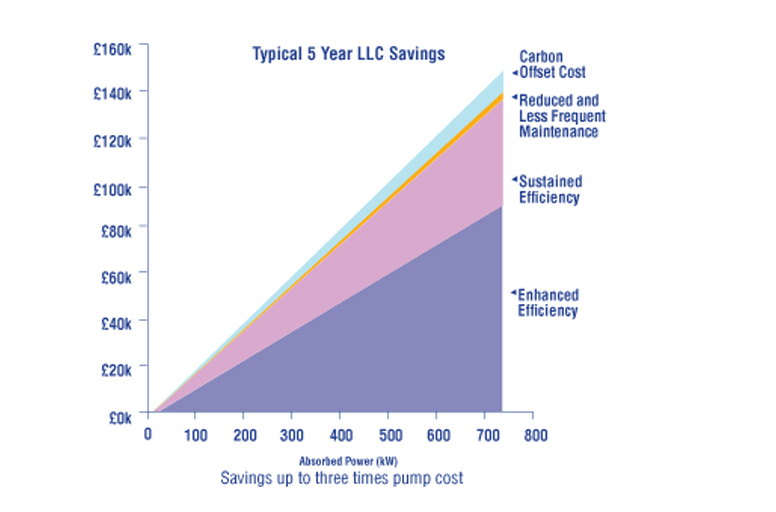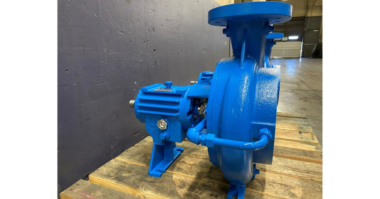In response to the ever increasing cost of energy, life-cycle cost analysis (LCC) is fast becoming the accepted method of evaluation for both capital projects and replacement plant. Various Life Cycle Cost models are available to pump users where capital, energy, maintenance and efficiency degradation costs are assessed to determine the pumps life-cycle cost. These models enable the user to make an informed decision based on the true cost of ownership, not just capital cost.
Reducing energy consumption through the selection of the most efficient pump has the added benefit of reducing CO2 emissions. Not only does this have environmental benefits, but can assist in reducing emission levies imposed on some high energy users.
Initial capital cost is in most instances a fraction of the whole life cost of a typical pumping installation. Energy, unplanned downtime with resultant loss of productivity and replacement of lower life expectancy consumable parts such as seals and bearings equates to as much as 80-90% of total life-cycle cost.
SPP Pumps recognition of the increasing emphasis on life cycle costing when evaluating pumping schemes for the twenty first century has lead to the development of our Lowest Life-Cycle Cost Series of pumps. The concept behind this series is to provide the end user with pumping solutions offering the lowest total cost of ownership.
Incorporating split case and vertical suspended bowl designs, this world class series of pumps has been developed from many of our existing well proven hydraulics. These have been finely tuned with the aid of computational fluid dynamics, with enhanced mechanical designs and innovative features. Standard materials of construction have been substantially upgraded to increase component life and reduce efficiency degradation.
https://empoweringpumps.com/companies/spp-pumps/





Comments